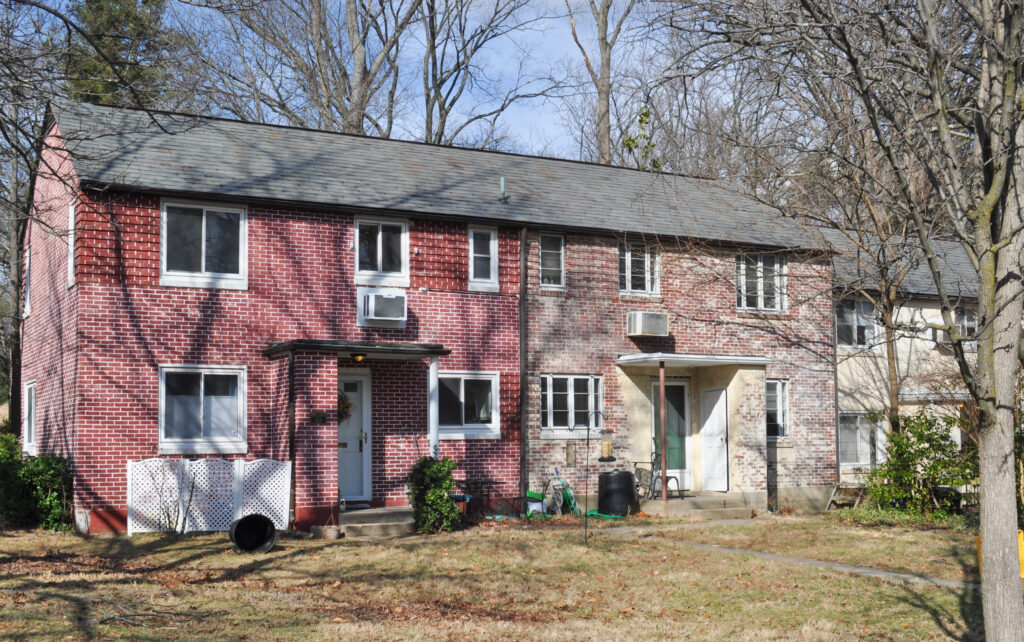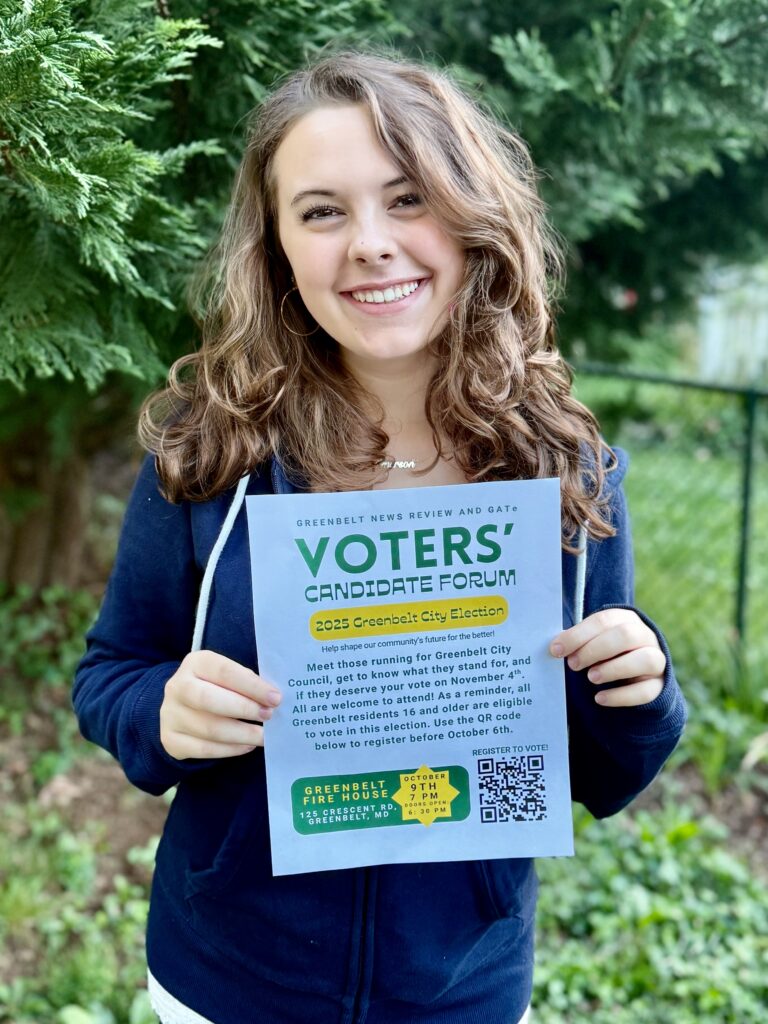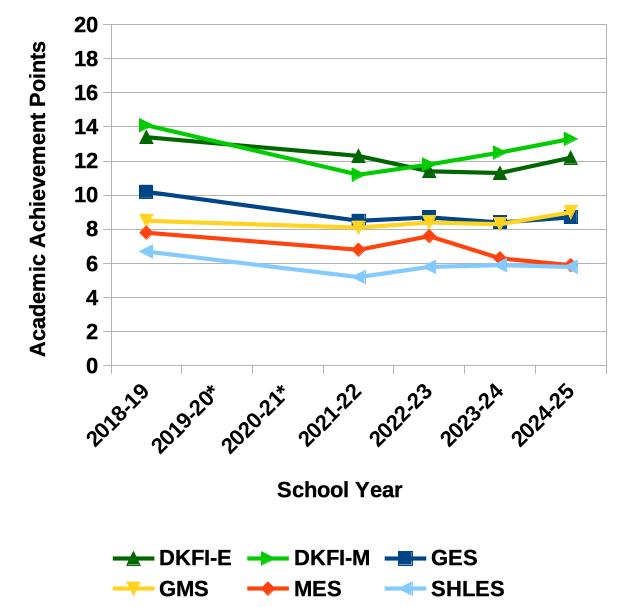The Maryland General Assembly has granted $100,000 to the Greenbelt Museum for its expansion project, achieving $360,000 of the $550,000 estimate needed. This timing coincides with the July merger of the Museum with the Recreation Department, which will increase staffing support and visibility and outreach for the Museum. The July merger will give the Museum and Recreation Department staff time to integrate operations, plan for expanded museum hours and programs before the new Greenbelt Education and Visitor Center at 10-A Crescent opens to visitors.
10-A Until Now
The Museum was founded at 10-B Crescent Road by the Friends of the Greenbelt Museum (FOGM) during Greenbelt’s 50th anniversary in 1987. The Museum is restored and furnished in the 1936 to 1952 period. Its size – 836 square feet – limits the number of people who can visit at one time, so in 2016, the city purchased the adjoining unit, 10-A Crescent, from the Dwyer family, who lived there for 61 years. Since then, during 10-A renovation and pandemic delays, Museum staff used its untouched residential configuration for programs and an accessible visitor restroom.
FOGM and Museum Director Megan Searing Young worked with architects and Greenbelt Homes, Inc. (GHI) to design the renovation and expansion to ensure it met the
Neighborhood Conservation Overlay Zone requirements as well as GHI requirements. Young emphasized that the city, as 10-B and 10-A owner, strives to be a conscientious GHI member and a good neighbor.
Visitor Center Plans
The unit at 10-B will retain its historically accurate residential configuration and restoration, while 10-A will be transformed from a 2016 GHI residence into a learning facility for multiple services and flexible programs, such as school groups, hands-on activities, lectures, exhibits and archives. Its footprint will approximate the current house which includes a bathroom, sunroom and garage and will extend as far as the existing patio on the garden side. The siding will be removed, for an exterior complementary to 10-B’s 1937 cinderblock.
The completed Greenbelt Education and Visitor Center will have an accessible main entrance from Westway (minimizing disruption to 1 Westway neighbors), with reception, program spaces, a gift shop and accessible
restrooms on the first floor and archives and office space on the second floor. A garden will continue to surround the building with new plantings. The completed 1,783-square-foot building will more than double the space in the 10-B historic house.
The Center will house all Museum operations for the first time: Museum house, visitor operations, staff office and archives. Increasing its size and staffing (see Merger below) will enable it to serve as a visitor center for the City of Greenbelt. Young said, “We’re excited to make the Museum a starting place to explore Greenbelt. Our goal is that the Museum is not just a place, but to interpret the whole community. We conduct walking tours, lectures, special events, all across the community. To have a spot where people can come to learn about what else is in Greenbelt, is really important. That way people can come here and learn about the ‘historic campus’ and all of Greenbelt – its businesses, restaurants and other sites.” She also envisions expanding opportunities for high school students to serve as junior docents and earn community service hours and with FOGM a sponsored paid internship for undergraduate and graduate students.
Visitor Center Timeline
Museum staff will begin review and permit processes in May with GHI, the city and county and will select a contractor. They hope to begin the physical work by September, starting with removing the first-floor non-original bathroom, sunroom and patio slab, and addressing dampness and HVAC and possible asbestos abatement. Barring unforeseen circumstances, opening is planned for summer 2024.
FOGM will soon initiate major fundraising to raise the final $200,000 to complete the Center. Its fundraising will also seek additional funds to invest in online and in-person educational programs, including preserving and digitizing the museum’s collection of original Greenbelt artifacts. They also hope to add technologies to engage new audiences, such as a virtual tour and making the artifacts viewable online. FOGM plans to approach funding sources including private individuals, private foundation grants and naming opportunities (upon city council approval) such as the garden and accessible walkway around the property.
Merger
Young and Recreation Department Director Greg Varda first recommended the merger to city staff and council in 2021. They cited benefits including expanding existing shared programs, marketing each other’s programs and supporting museum operations with Recreation’s part-time staff. Varda said the Museum was not a natural fit in administration under the city manager, whereas both Recreation and the Museum deliver cultural and arts programming.
City advisory groups concurred, including the Park and Recreation Advisory Board and the FOGM Board of Directors, as did city staff and council. The merger will take effect in July, with the beginning of the 2024 fiscal year. The merger moves existing museum budget and staff, without increasing them, from under the city manager to the Recreation Department.
“Recreation is a more natural spot for the Museum to more easily participate in all areas of Greenbelt,” said Young. “Rather than doing a program on our own with our small staff, we can partner with Recreation, like the Celebration of Spring coming up at the Springhill Lake Recreation Center. It makes much more sense to have a table at those events vs. doing it on our own, and we get awareness to those attendees.” The Museum will leverage Recreation Department marketing, such as its customer database, seasonal activity guides and Recreation’s registration services. The merger will enable more people to know about and participate in Museum programs and help it contribute more to Recreation offerings, such as spring and summer camps, Springhill Lake Recreation Center programs, senior programs, Artful Afternoons, research materials for artistic projects and classes.
Incorporating the Education and Visitor Center as a fully functioning city facility will benefit from Recreation staff who already manage multiple city facilities and Young will provide guidance specific to Museum environments.
The Museum was regularly open for tours only on Sunday afternoons, with lectures, walking tours and other events at varying times, and struggled to staff these hours and events with one full-time employee (Young), one part-time employee and volunteers. It reopened after the pandemic with reduced Sunday hours and timed tickets to ensure sufficient volunteers. Recreation staff will significantly help fill these gaps and support increasing museum hours beyond Sundays, adding programs and tours, and allowing more visitors. Young envisions expanding regular hours from Sunday to four days a week, with possibly more days later.
Cross training Recreation staff for the Center will be useful across the department and to residents and visitors throughout the city. Since Recreation’s part-time staff serve multiple functions and sites, their increased knowledge of Greenbelt history will improve service to all their customers. Young said “We are really looking forward to training them in Greenbelt history, so they can use the knowledge at the visitor center and wherever they work in the city.”
“Adding Museum content to the Recreation Department’s current offerings addresses Greenbelters’ (and others’) expressed desire for cultural diversity and equitable programming,” wrote Varda. For instance, Young said, “We have a real emphasis on people understanding that Greenbelt was segregated. We have to make sure people know this was an amazing project built by the federal government, but only for White families. Having a space like [10-A] will allow us to make sure that narrative is front and center when we have people come in. It will be nice to have some technology so people can access primary sources, like Angie Williams. She and her family were the first family of color to move into GHI in 1967 and we have this whole interview with her. It would be so cool to have that set up so people could view it while waiting for a tour.”
“Greenbelt really is so indicative of so many major issues of the 20th century: the Great Depression, World War II, cooperatives, suburbs, urban planning and race relations,” said Young. “One of the things we’re most looking forward to is having a centralized space where we can explore those topics.” She and Varda noted that integrating the Greenbelt Museum and history into citywide Recreation programs will address Greenbelt residentsʼ wishes and greatly expand the reach of the Greenbelt Museum in the community.



